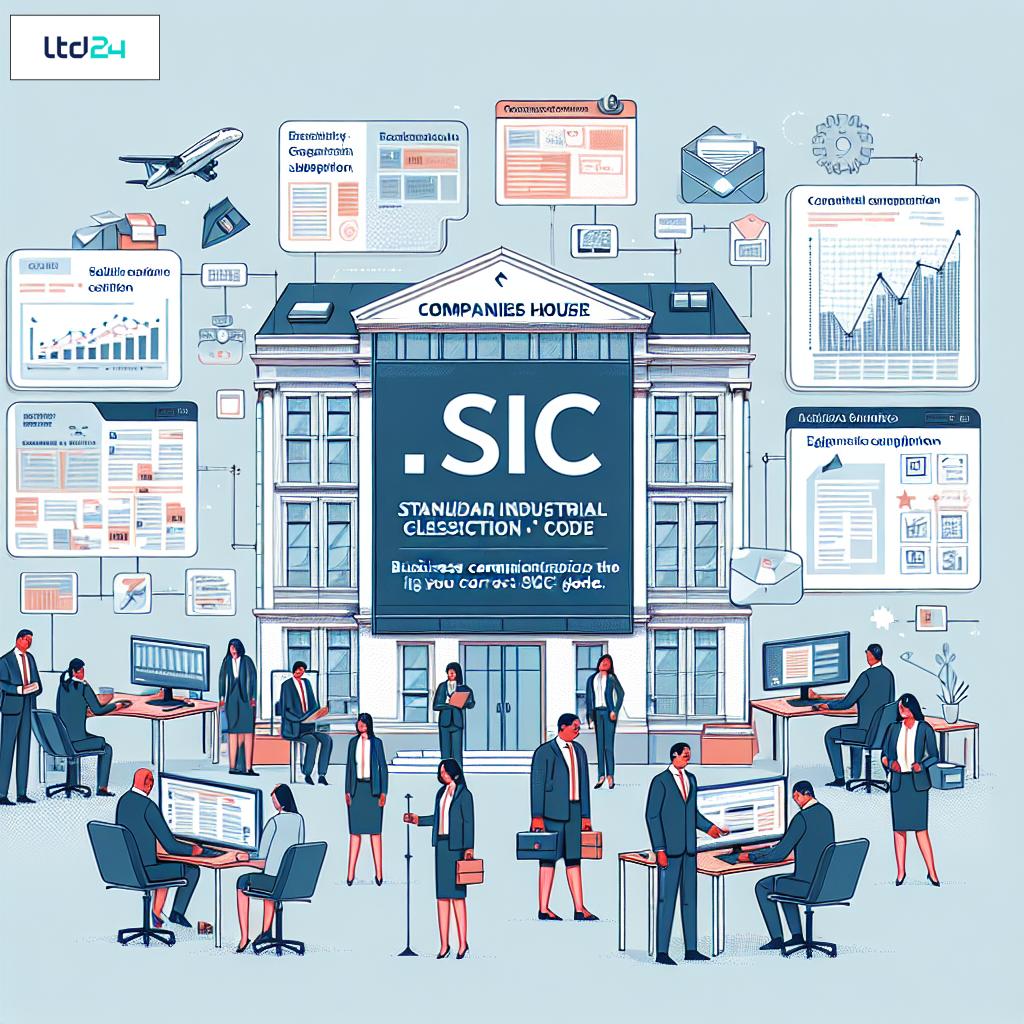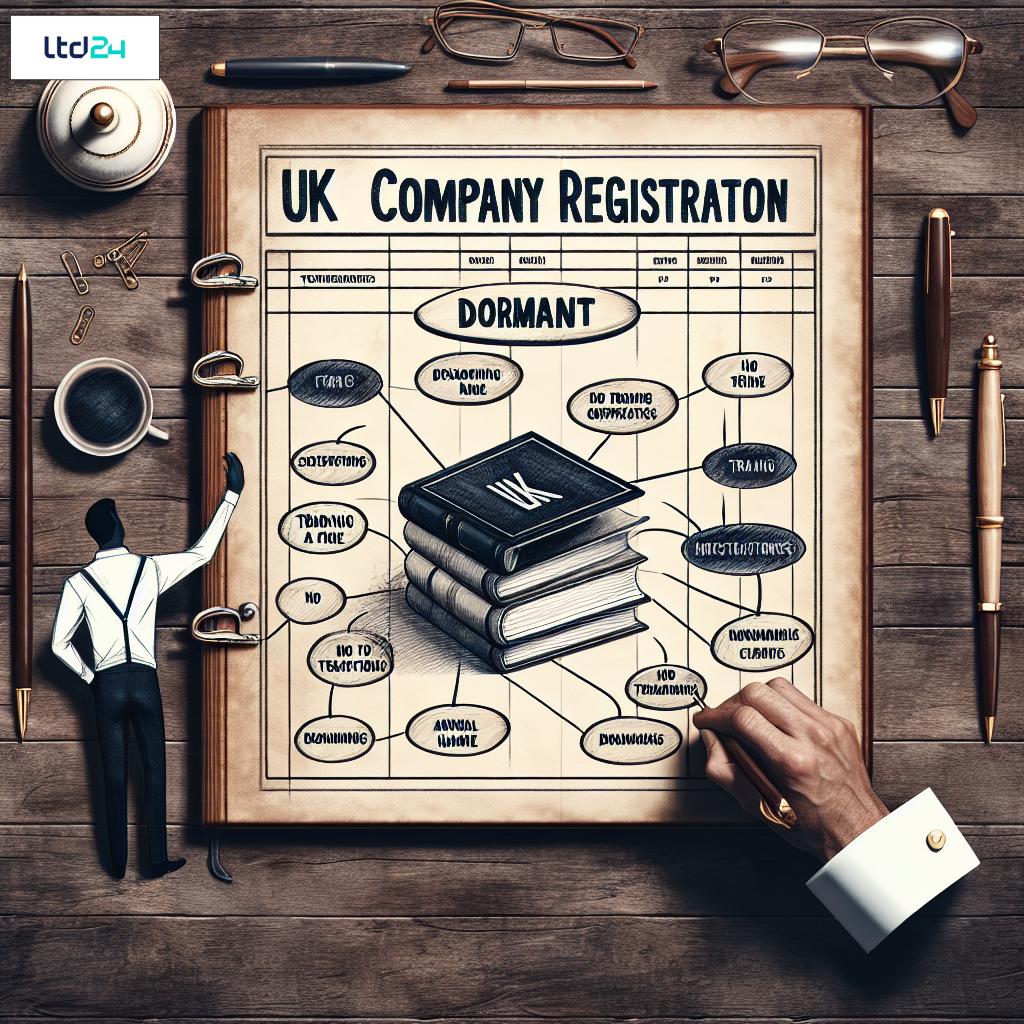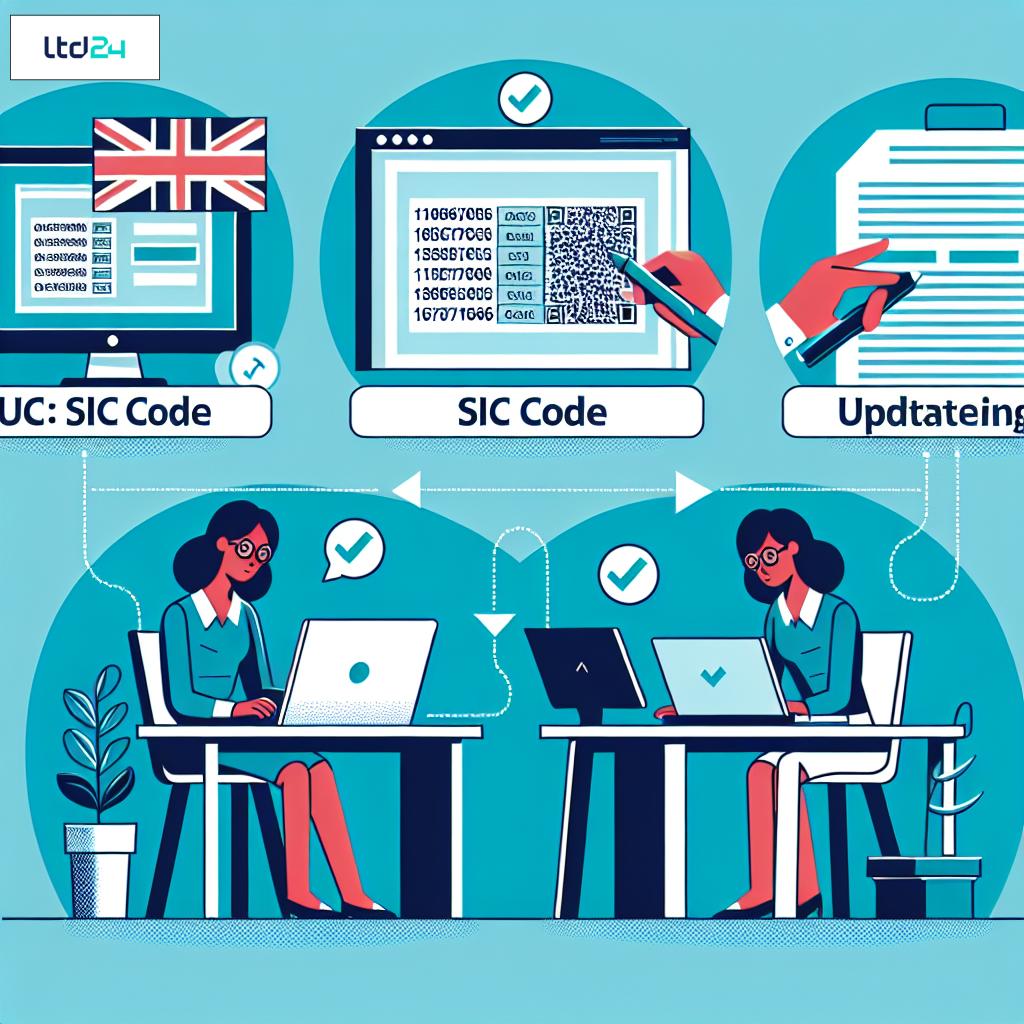Understanding the Legal Framework of Company Notifications
The Companies Act 2006 establishes a comprehensive framework governing when and how UK businesses must notify Companies House of various changes to their corporate structure and affairs. This fundamental piece of legislation underpins the entire notification regime and serves as the statutory basis for compliance requirements. Business entities registered in the United Kingdom have a legal obligation to report specific alterations within prescribed timeframes, with failure to do so potentially resulting in financial penalties, legal complications, and reputational damage. The notification obligations extend across various aspects of corporate governance, from directorial changes to alterations in share capital structure. It is imperative that company officers, particularly directors and company secretaries, maintain vigilant oversight of these statutory requirements to ensure that all obligatory disclosures are executed promptly and accurately. The Companies House online portal serves as the primary mechanism for submitting these notifications, though paper-based alternatives remain available for certain filing categories.
Key Deadlines for Directorial Changes and Personnel Notifications
When changes occur to a company’s directorship or key personnel, specific notification deadlines must be adhered to. Companies must inform Companies House within 14 days of any appointment, resignation, or removal of directors or company secretaries using forms AP01, AP03, TM01, or TM02 respectively. Similarly, modifications to directors’ personal details—such as residential addresses, names, or nationality—require notification within the same 14-day window via form CH01. Failure to meet these deadlines can result in penalties ranging from £100 to £5,000 in severe cases of non-compliance. The notification responsibility typically falls to the company secretary or, in their absence, a director. These requirements apply equally to private limited companies, public limited companies, and limited liability partnerships, though the specific forms may vary. When appointing new directors, comprehensive verification of identity and eligibility must precede the formal notification to Companies House to ensure compliance with directorship qualifications under the Companies Act 2006.
Registered Office Address Modifications: Procedures and Timeframes
When a company decides to change its registered office address, prompt notification to Companies House is mandatory to maintain compliance with statutory requirements. This change must be reported using form AD01, which can be submitted either through the Companies House online portal or via paper filing. The notification must be executed within 14 days from the effective date of the address change. It’s crucial to understand that the registered office must always be situated within the same UK jurisdiction where the company was originally incorporated—companies registered in England and Wales cannot relocate their registered office to Scotland without pursuing a more complex procedure for transferring jurisdiction. Prior to submitting the notification, directors should ensure that the new address complies with all legal requirements, including the capacity to receive official communications. Companies utilizing virtual business address services must confirm that their service provider permits the address to be used as a registered office. Following the confirmation from Companies House, the company must promptly update all stationery, website information, and contractual documentation to reflect the new registered address.
Share Capital Alterations and Shareholder Reporting Requirements
When a company undergoes changes to its share capital structure, specific notification requirements must be fulfilled. Companies must report any alteration to the company’s share capital, including new share issuances, within one month using form SH01. For share transfers between existing shareholders or to new investors, although no immediate notification is required, these changes must be reflected in the annual confirmation statement. Companies issuing new shares must notify Companies House of the allotment of new shares using the appropriate form, detailing the class, quantity, and nominal value of shares issued. When share rights or designations are modified, form SH08 must be submitted within 15 days of the amendment. For reductions in share capital, court-approved procedures may be necessary, with form SH19 required for notification. Companies must also maintain accurate internal registers of shareholders and share transfers, updating the register of members promptly following any transaction. The annual confirmation statement (CS01) serves as a comprehensive verification of the company’s share structure, providing regulatory authorities with an updated overview of share ownership and capital configuration.
Annual Confirmation Statement Submission Requirements
The Annual Confirmation Statement represents a critical compliance obligation for all UK companies, requiring submission to Companies House at least once every 12 months. This document, filed via form CS01, serves as an official verification of company information held on the public register. The filing deadline falls 14 days after the company’s confirmation date, which typically aligns with the incorporation anniversary. Unlike previous annual returns, the confirmation statement focuses on confirming or updating existing information rather than comprehensive resubmission. Key elements requiring verification include registered office details, director and secretary information, statement of capital, shareholder data, and Persons with Significant Control (PSC) information. Companies must pay the statutory filing fee (currently £13 for electronic submissions and £40 for paper filings) regardless of whether any information changes have occurred. Failure to submit the confirmation statement constitutes a criminal offense, potentially resulting in fines and the commencement of compulsory strike-off proceedings. Many companies opt to coordinate confirmation statement submission with their annual accounts filing to streamline their compliance calendar, although the legal requirements and filing deadlines for these documents remain distinct.
PSC Register Updates: Reporting Beneficial Ownership Changes
When changes occur to a company’s beneficial ownership structure, prompt notification to Companies House becomes mandatory under the People with Significant Control (PSC) regulations. Companies must update their PSC register within 14 days of confirming a change, and subsequently notify Companies House within a further 14 days using the appropriate PSC forms (PSC01-PSC09). The definition of a Person with Significant Control encompasses individuals who hold over 25% of shares or voting rights, can appoint or remove a majority of the board, or otherwise exercise significant influence or control. When notification requirements are triggered, companies must provide comprehensive details including the PSC’s name, date of birth, nationality, country of residence, service address, and the nature and extent of their control. The verification process requires reasonable steps to identify PSCs, including sending notices to suspected PSCs and potentially restricting relevant interests if responses aren’t forthcoming. Failure to maintain accurate PSC information may result in criminal penalties for both the company and its officers, with fines up to £5,000 and potential disqualification from directorial positions. Foreign entities conducting business in the UK through registered establishments must also comply with equivalent beneficial ownership disclosure requirements under the overseas entities register provisions of the Economic Crime (Transparency and Enforcement) Act 2022.
Company Name Change Procedures and Timeline
When a company decides to modify its legal name, a structured notification process must be followed. Initially, a special resolution must be passed by shareholders with at least 75% approval, or an alternative method specified in the company’s articles of association must be employed. Following this resolution, notification to Companies House must occur within 15 days using form NM01, accompanied by a copy of the special resolution. The filing fee (currently £10 for electronic submissions and £30 for paper filings) must be paid concurrently with the submission. Companies House typically processes name change requests within 24-48 hours for electronic filings and 8-10 days for paper submissions. Upon approval, a Certificate of Incorporation on Change of Name will be issued, legally establishing the new corporate identity. Companies must subsequently update all business documentation, including letterheads, invoices, contracts, and websites, to reflect the new name. The company’s registration number remains unchanged despite the name alteration. Additional notification obligations extend to informing HMRC, updating VAT registration details, notifying banks and insurance providers, and amending property leases and intellectual property registrations. Companies should also ensure domain names and social media profiles align with the new corporate identity to maintain consistent brand representation.
Accounting Reference Date Changes and Financial Reporting
When a company needs to alter its financial year-end, specific procedures for notifying Companies House must be followed. Companies can change their Accounting Reference Date (ARD) using form AA01, which must be submitted before the filing deadline of the current accounting period. The ARD can be changed to make the accounting period either shorter or longer, though extensions cannot exceed 18 months from the start date of the accounting period, except in special circumstances such as parent company alignment or administration proceedings. Companies are permitted to change their ARD multiple times, but restrictions apply when lengthening an accounting period—this can only be done once in five years unless specific exemptions apply. When shortening an accounting period, notification must occur before the abbreviated period ends. The implications of ARD changes extend beyond mere administrative adjustments, affecting statutory filing deadlines for annual accounts, corporation tax return submissions, and potentially impacting financial comparability across periods. Companies with subsidiaries often synchronize accounting reference dates across the group to streamline consolidated reporting. Prior consultation with accountants or tax advisors is highly recommended before executing an ARD change to ensure all regulatory requirements are satisfied and to mitigate any unintended consequences for tax payments or compliance obligations.
Changes to Articles of Association or Constitution
When a company modifies its Articles of Association, prompt notification to Companies House becomes a legal obligation. Such amendments require approval via a special resolution with at least 75% shareholder approval, followed by filing both the resolution and the amended articles within 15 days of passing, using form CC04. Companies must submit the full revised articles rather than merely highlighting the changes, ensuring the document complies with statutory requirements for content and structure. Common modifications include alterations to share rights, directorial powers, decision-making processes, and dividend distribution procedures. These changes can significantly impact corporate governance, shareholder relationships, and operational flexibility, necessitating careful drafting and legal review. Publicly traded companies face additional notification requirements, needing to inform relevant stock exchanges about material amendments that might affect market behavior or stock valuation. Following Companies House registration, the amended articles become legally binding, requiring implementation of new governance procedures throughout the organization. Companies must disseminate the revised articles to directors, shareholders, and relevant employees, ensuring consistent application of new provisions. The historical sequence of articles amendments remains accessible in the public record, providing transparency about the evolution of the company’s governance framework.
Liquidation, Strike-off, and Dissolution Notification Requirements
When a company commences winding up proceedings, enters administration, or pursues voluntary strike-off, stringent notification requirements apply. For voluntary liquidation, form LIQ01 must be submitted within 14 days of the shareholders’ resolution, accompanied by the appointed liquidator’s consent to act. In compulsory liquidation scenarios, court documents must be filed immediately following the winding up order. Companies pursuing voluntary strike-off must submit form DS01, signed by a majority of directors, after settling all outstanding liabilities and ceasing trading operations. Notice of strike-off must be provided to all interested parties, including employees, creditors, shareholders, and pension trustees. The Gazette publication of the strike-off intention initiates a two-month objection period during which creditors or other stakeholders may contest the dissolution. For companies entering administration, form IN01 must be filed within 24 hours of the administrator’s appointment. Throughout insolvency proceedings, interim statements and liquidator reports must be regularly submitted to Companies House, ensuring transparency in the resolution process. Following the conclusion of liquidation or strike-off procedures, final dissolution notices are published, permanently removing the entity from the register. Restoration applications remain possible within six years of dissolution if assets are subsequently discovered or legal claims necessitate the company’s revival.
Notification of Mortgage or Charge Registrations
When a company creates a new charge (such as a mortgage, debenture, or fixed/floating charge over assets), notification to Companies House is mandatory within 21 days of creation using forms MR01 (for companies registered in England and Wales), MR02 (for companies registered in Scotland), or MR03 (for companies registered in Northern Ireland). The filing must include the instrument creating the charge or a certified copy thereof, accompanied by prescribed particulars detailing the date, parties involved, and assets secured. Late registration requires court application and may render the security void against liquidators, administrators, or other creditors. Companies must maintain their own Register of Charges at their registered office, available for inspection by creditors or shareholders. When charges are satisfied or assets released from security, notification to Companies House using forms MR04, MR05, or MR06 should occur promptly, though no statutory deadline applies for these satisfactions. Electronic filing offers expedited registration with same-day processing, while paper submissions typically require 8-10 working days. The Companies House register provides public notice of encumbrances on company assets, serving as crucial due diligence information for potential investors, lenders, or counterparties assessing creditworthiness and financial stability.
Cross-border Establishment and Overseas Company Reporting
When UK companies establish operations abroad or when foreign entities establish a presence in the UK, specific notification requirements must be observed. UK companies opening overseas branches or representative offices must typically register with local commercial registries in the host country within prescribed timeframes that vary by jurisdiction. Conversely, overseas companies establishing UK branches must register with Companies House within one month of establishment using form OS IN01, providing constitutional documents, director information, and details of the UK representatives. These foreign entities must subsequently file annual accounts and notify any changes to their corporate information using specialized OS forms. Companies involved in cross-border mergers must submit detailed merger plans and supporting documentation using forms CB01 and CB02, adhering to the strict procedural requirements of the Companies (Cross-Border Mergers) Regulations 2007. For UK companies relocating their headquarters abroad while maintaining UK registration, notifications regarding management and control changes may trigger both Companies House filing requirements and tax implications. The European Economic Interest Grouping (EEIG) framework, while affected by Brexit, still necessitates specific filings for existing arrangements. Companies operating internationally should engage international tax consulting experts to navigate the complex interplay between Companies House requirements and cross-border compliance obligations.
Digital Filing and Authentication Requirements
The digital transformation of Companies House filing procedures has established electronic submission as the predominant notification method for most corporate changes. Companies must register for the Companies House WebFiling service to access the online submission portal, requiring authentication codes specific to each company. These confidential codes, typically dispatched to the registered office, must be safeguarded against unauthorized access while remaining accessible to authorized officers. Digital submissions necessitate electronic signatures, which carry the same legal weight as traditional signatures when properly executed. The authentication process typically involves verification through registered email addresses and security questions. For certain high-sensitivity filings, such as striking off applications or confirmation statements, multiple authentication steps may be required. Electronic filing offers advantages including reduced fees, faster processing, automatic validation, and immediate confirmation receipts. Companies House employs sophisticated verification algorithms to detect suspicious filing patterns, helping prevent fraudulent submissions. Companies utilizing third-party filing agents or formation agents must establish robust authorization protocols and maintain oversight of all submissions made on their behalf. While paper filings remain available for most notification types, Companies House has implemented a strategic transition toward mandatory digital submission for certain filing categories, with further expansion of this requirement anticipated in forthcoming regulatory updates.
Non-compliance Consequences and Penalty Framework
Failure to notify Companies House of corporate changes within statutory timeframes triggers a cascading penalty framework designed to ensure compliance. Financial penalties commence at £100 for delays up to three months, escalating to £500 for public companies and £1,000 for repeated infractions within a five-year period. Persistent non-compliance may lead to criminal proceedings against directors and company officers, potentially resulting in personal fines up to £5,000 and disqualification from directorial positions for up to 15 years under the Company Directors Disqualification Act 1986. Beyond direct penalties, non-compliance can generate substantial indirect consequences, including complications in corporate transactions where Companies House records are scrutinized during due diligence, difficulties securing financing when lenders discover discrepancies in public records, and potential breach of contractual obligations requiring maintenance of good standing. Companies may also face compulsory strike-off proceedings initiated by the Registrar if notification failures suggest the company is no longer operating. The reputational damage from public non-compliance records can undermine customer, supplier, and investor confidence. Directors should note that claiming ignorance of filing requirements provides no legal defense, as directors have a statutory duty to understand and fulfill their compliance obligations.
Compliance Calendar for UK Companies: Key Notification Dates
Establishing a comprehensive compliance calendar represents a fundamental best practice for managing Companies House notification obligations effectively. This strategic approach requires mapping all recurring statutory deadlines alongside potential trigger events that may necessitate ad-hoc filings. Annual confirmation statements must be submitted within 14 days after the company’s confirmation date, which typically aligns with the anniversary of incorporation. Annual accounts filing deadlines vary based on company status—nine months after the accounting reference date for private companies and six months for public companies. VAT returns typically follow quarterly cycles based on the company’s VAT registration date, while PAYE submissions adhere to monthly deadlines. Corporation tax filings must occur within 12 months of the accounting period end, with tax payment deadlines normally preceding this at nine months and one day after the accounting period end. Beyond these recurring obligations, companies should implement monitoring systems for event-triggered notifications, including directorial changes (14-day notification window), share allotments (one month), and registered office address changes (14 days). Utilizing digital calendar applications with automated reminders, shared accessibility among responsible officers, and buffer periods before statutory deadlines creates a robust compliance framework. Many companies align their accounting services with compliance calendar maintenance to ensure integrated oversight of both financial reporting and Companies House notification requirements.
Director Responsibilities and Personal Liability for Notifications
Directors bear primary responsibility for ensuring timely notification of corporate changes to Companies House, with personal liability attaching to compliance failures. Under the Companies Act 2006, directors have an explicit statutory duty to exercise reasonable care, skill, and diligence in fulfilling corporate obligations, including regulatory filings. This responsibility cannot be delegated away—even when practical tasks are assigned to company secretaries, administrative staff, or external advisors, directors retain ultimate accountability. When notification deadlines are missed, directors face potential personal liability for resulting penalties, particularly in cases of persistent non-compliance or deliberate concealment. The Companies Directors Disqualification Act 1986 provides mechanisms for disqualifying directors whose failure to maintain proper notifications demonstrates unfitness to manage corporate affairs. Directors of financially distressed companies must exercise particular vigilance, as notification failures during periods preceding insolvency may trigger wrongful trading allegations and personal liability for company debts. Even after resignation, directors may face continuing liability for notification defaults occurring during their tenure. The appointment of a director therefore carries significant compliance responsibilities beyond operational management, requiring diligent oversight of all statutory filing obligations and internal systems to ensure adherence to notification timeframes.
Best Practices for Managing Companies House Notifications
Implementing robust notification management systems represents a critical aspect of corporate governance for UK companies. Establishing clear internal responsibility assignments designating specific individuals to monitor and execute different categories of filings provides accountability and prevents gaps in compliance oversight. Creating comprehensive procedural documentation detailing the steps required for each notification type, including required forms, supporting documents, approval processes, and submission methods, ensures consistency regardless of personnel changes. Companies benefit significantly from implementing automated reminder systems generating alerts at defined intervals before statutory deadlines, with escalation protocols for unaddressed notifications. Using centralized digital repositories for storing confirmation receipts, authentication codes, and historical filing records provides a verifiable audit trail of compliance activities. Regular staff training covering notification requirements, recent regulatory changes, and filing processes maintains institutional knowledge and reduces dependency on specific individuals. Many companies establish quarterly compliance review meetings to assess upcoming filing obligations and verify completion of past notifications. International tax consulting firms often recommend establishing relationships with dedicated Companies House filing agents who provide specialized expertise and redundancy for critical notifications. For complex group structures, developing standardized notification templates and consolidated filing calendars ensures alignment across multiple entities. Implementing these best practices creates a systematic approach to notification management that minimizes compliance risks and administrative inefficiencies.
Updates to Companies House Filing Requirements 2023-2024
Recent legislative developments have introduced significant modifications to the Companies House notification regime. The Economic Crime and Corporate Transparency Act 2023 has expanded verification requirements for company directors and persons with significant control, necessitating enhanced identity verification procedures for new appointments and existing officers. Under these reforms, Companies House has acquired expanded powers to query suspicious filings and reject documents that raise compliance concerns, requiring companies to provide additional supporting evidence when requested. The transition toward fully digital filing has accelerated, with certain notification types now mandated for electronic submission, eliminating paper filing options. Updated beneficial ownership disclosure requirements now include verification of overseas entities with UK property interests through the Register of Overseas Entities. Filing fees have been recalibrated, with electronic submissions receiving greater discounts compared to paper alternatives to encourage digital adoption. Companies House has implemented more sophisticated risk assessment algorithms to identify anomalous filing patterns, triggering enhanced scrutiny for notifications that deviate from expected patterns. New statutory guidance has clarified director responsibilities regarding filing accuracy, emphasizing that the legal duty extends beyond mere submission to ensuring the substantive correctness of all notified information. Companies must adapt their compliance procedures to accommodate these evolving requirements, particularly regarding identity verification protocols and digital authentication mechanisms.
Common Filing Mistakes and How to Avoid Them
Analysis of Companies House notification practices reveals several recurring errors that companies should proactively address. Misclassification of forms represents a frequent mistake, particularly when distinguishing between similar notification types such as TM01 (termination of appointment) versus RP02B (resignation statement). Companies should reference the Companies House form guides or consult filing specialists when uncertainty arises regarding appropriate documentation. Incomplete supporting information commonly causes rejection of filings, particularly when submitting resolutions or amended constitutional documents without all required signatures or certification. Implementing comprehensive document checklists for each notification type helps ensure completeness before submission. Contradictory information between current filings and existing register data frequently triggers verification queries—companies should review historical register entries before preparing new notifications to ensure consistency. Timing miscalculations often lead to late submissions, particularly when companies misinterpret the commencement of notification periods or fail to account for processing time. Conservative deadline management, treating statutory limits as backstops rather than targets, provides buffer protection against inadvertent violations. Technical filing errors, such as incorrect company authentication codes or digital signature problems, can be minimized through regular verification of access credentials and maintenance of up-to-date contact information. Company secretarial service providers recommend implementing filing rehearsals for complex or unfamiliar notifications to identify potential complications before actual submission deadlines.
Industry-Specific Notification Requirements
Certain sectors face augmented notification obligations beyond the standard Companies House requirements. Financial services firms regulated by the Financial Conduct Authority (FCA) must notify both Companies House and the FCA of directorial changes, with the latter requiring pre-approval for certain controlled functions under the Senior Managers and Certification Regime. Similarly, publicly listed companies must adhere to additional disclosure requirements under stock exchange regulations, potentially including immediate announcement of significant changes through regulatory information services. Insurance companies regulated by the Prudential Regulation Authority face specific notification requirements regarding changes to actuarial functions and internal audit arrangements. Healthcare providers registered with the Care Quality Commission must report changes to registered managers and controlling interests to both Companies House and the sector regulator. Charities limited by guarantee must notify both Companies House and the Charity Commission of trustee appointments, constitutional amendments, and certain financial transactions. Companies operating in regulated sectors should establish integrated notification systems that address the parallel requirements of Companies House and industry regulators, ensuring coordinated submissions that maintain consistency across multiple registries. Professional advisors with sector-specific expertise can provide valuable guidance on these overlapping notification obligations, helping companies develop comprehensive compliance frameworks that satisfy all applicable regulatory requirements without duplication of effort.
International Comparisons: UK vs. Other Jurisdictions
The UK Companies House notification system demonstrates distinctive characteristics when compared with corporate registries in other jurisdictions. Compared to European counterparts such as Germany’s Handelsregister or France’s Registre du Commerce et des Sociétés, Companies House typically processes notifications more rapidly, particularly for electronic filings, though requirements for director verification remain less stringent than in several continental jurisdictions. The UK system generally imposes shorter notification timeframes than many U.S. state registries, which often permit quarterly or annual updates for matters requiring immediate notification in the UK. However, Delaware’s Division of Corporations offers greater flexibility regarding registered office requirements and directorial disclosures. Compared to Singapore’s company registry, Companies House has historically required less extensive beneficial ownership disclosure, though recent legislative changes have narrowed this gap. Australia’s ASIC implements substantially higher filing fees and financial penalties for non-compliance than the UK system. The UAE’s various registries typically demand more extensive documentation and notarization requirements than Companies House, particularly for foreign directors. Companies operating across multiple jurisdictions should analyze these regulatory variations when developing global compliance policies, recognizing that notification practices suited to one jurisdiction may prove inadequate in others. International tax consulting firms with cross-border expertise can assist multinational enterprises in navigating these divergent notification regimes, developing coordinated approaches that satisfy all applicable requirements while minimizing administrative complexity.
Expert Guidance: When and How to Seek Professional Assistance
While many Companies House notifications can be managed internally, certain scenarios warrant engagement of professional advisors. Complex transactions involving multiple concurrent changes—such as reorganizations affecting share capital, directorial appointments, and constitutional amendments—benefit from specialist guidance to ensure proper sequencing and coordination of notifications. When contemplating significant constitutional changes with potential legal implications for shareholder rights or corporate governance, seeking solicitor review before submission helps identify unintended consequences. Companies facing compressed timeframes due to transaction deadlines or approaching statutory limits should consider engaging expedited filing services through specialized providers familiar with Companies House procedures. When notification requirements intersect with tax implications, such as during share capital reorganizations or cross-border arrangements, integrated advice from tax consulting experts ensures consideration of both compliance and fiscal aspects. Companies with distressed financial circumstances should seek insolvency practitioner guidance before executing any Companies House notifications that might affect creditor rights or director liability. Foreign entities establishing UK operations typically benefit from professional assistance with initial registration and ongoing compliance obligations. The cost-benefit analysis of professional engagement should consider not merely the filing complexity but also the potential consequences of errors, including financial penalties, transaction delays, and reputational damage. When selecting professional advisors, companies should verify specific expertise with Companies House procedures rather than assuming all accountants or solicitors possess specialized filing knowledge.
Your Compliance Pathway: Expert Support for Companies House Notifications
Navigating the complexities of Companies House notification requirements demands precision, timeliness, and expert knowledge. At LTD24, we understand that maintaining perfect compliance while focusing on your core business presents a significant challenge for company directors and officers.
We are a boutique international tax consulting firm with specialized expertise in UK corporate compliance, offering comprehensive support for all Companies House notification requirements. Our team of compliance specialists can implement robust notification systems, monitor filing deadlines, prepare accurate documentation, and execute timely submissions on your behalf.
Whether you’re managing routine confirmation statements, navigating complex share capital reorganizations, or establishing international corporate structures, our tailored compliance services minimize your risk of penalties while maximizing governance efficiency.
Engage with one of our compliance experts for a personalized assessment of your notification obligations and discover how our strategic approach to Companies House filings can protect your business and its officers from compliance pitfalls. Book your consultation today at the rate of 199 USD/hour and secure peace of mind for your corporate compliance needs. Book your expert consultation now.










